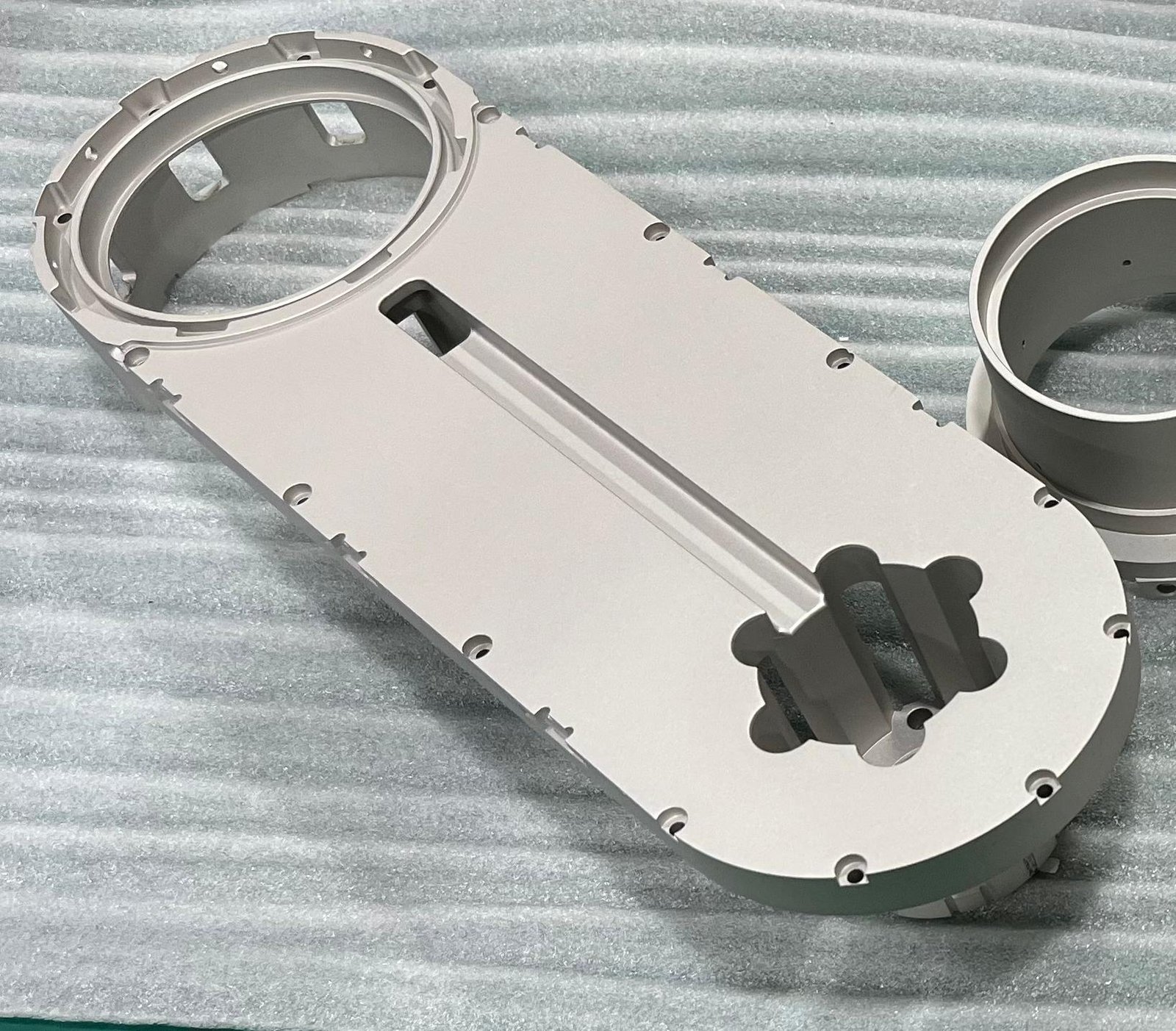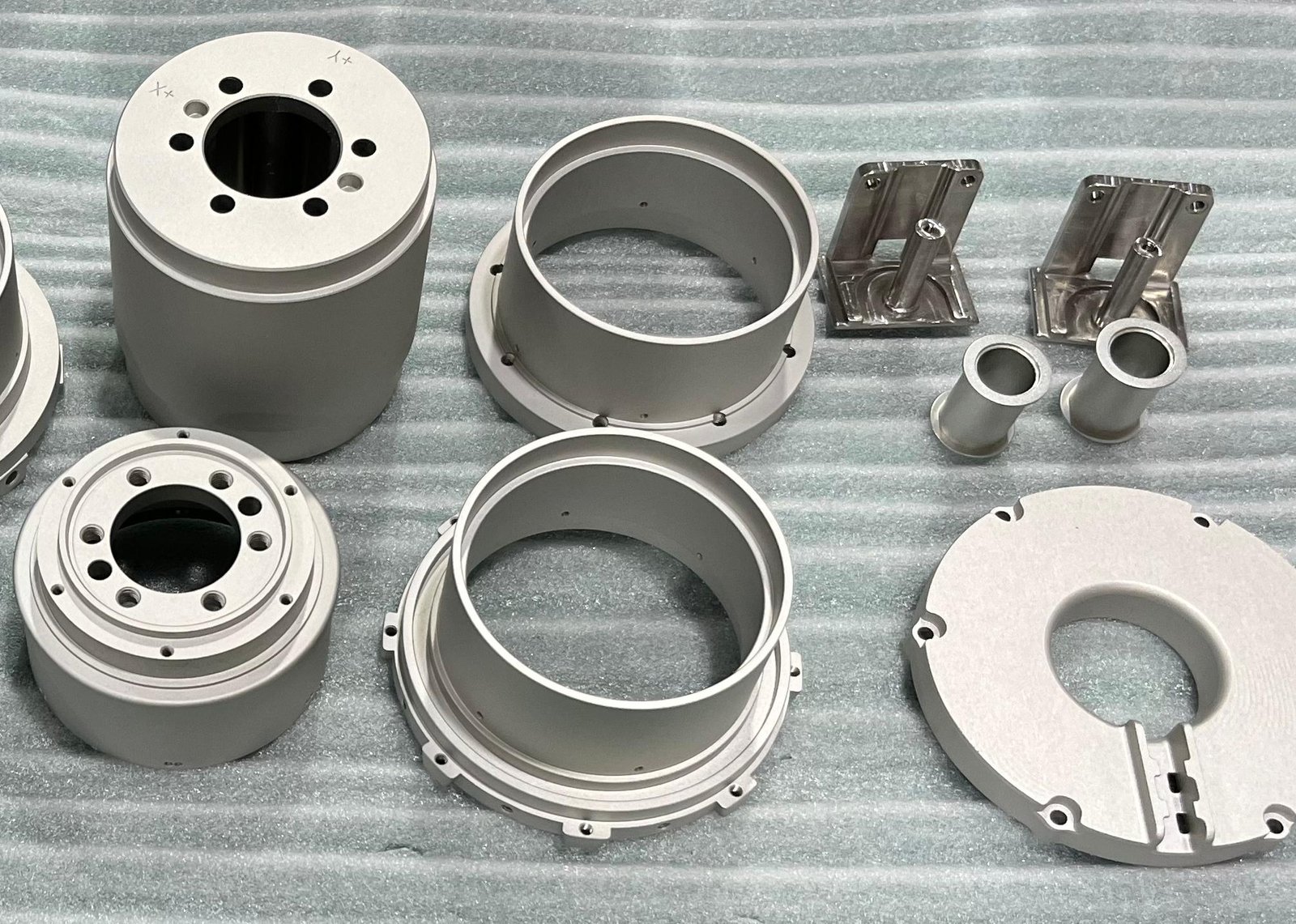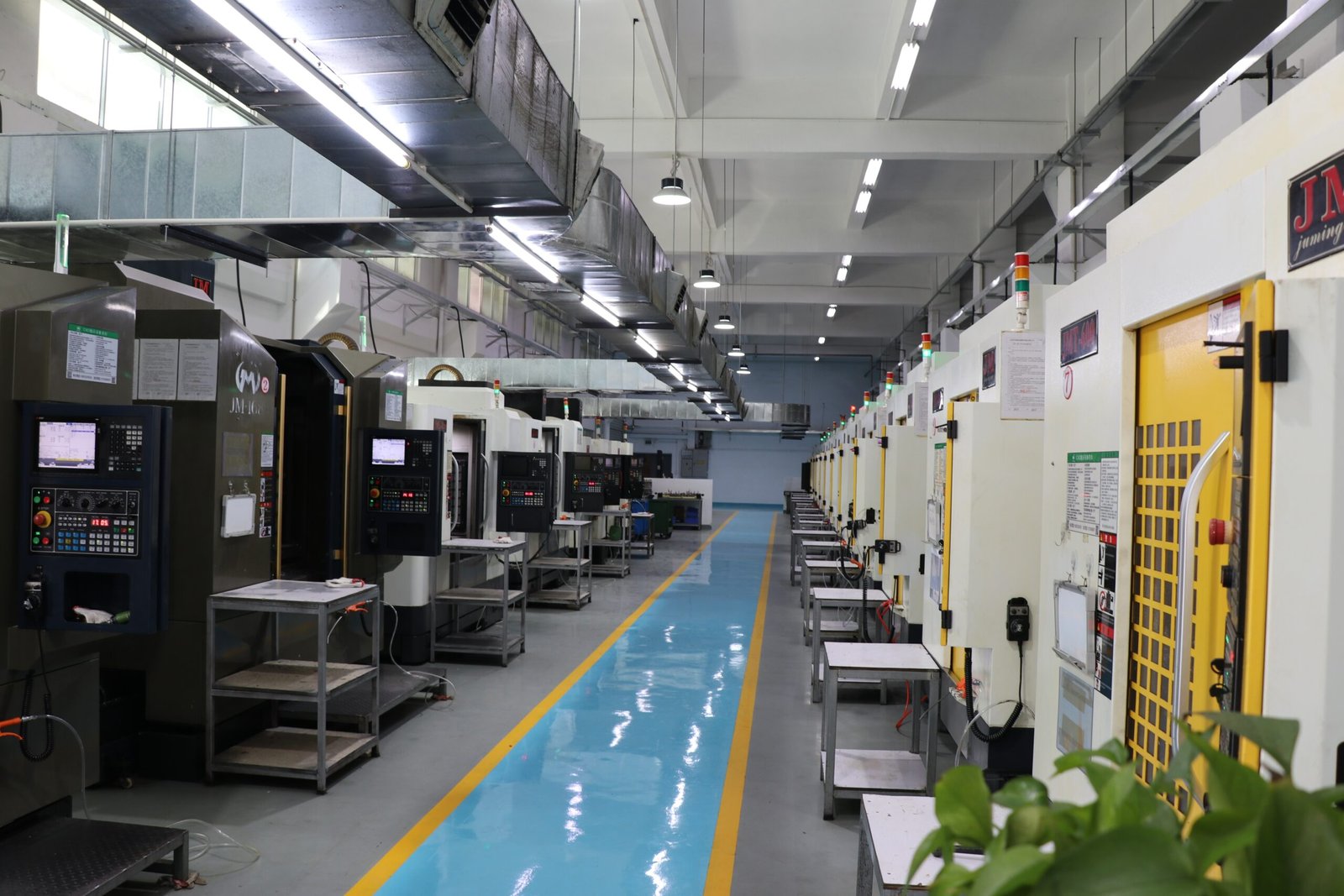CNC Machining is the backbone of modern manufacturing, especially when it comes to achieving precision in feed rate optimization for projects across industries like automotive, machine building, and automotion. In this article, we summarize insights from various expert sources—including guides on optimizing feed rate for spot drilling, CNC programming discussions, and community-driven advice—and merge these insights with the proven expertise of CNCRUSH. With over 12 years of experience as a professional China-based CNC machining service provider, specializing in CNC Milled parts and CNC Turned parts, CNCRUSH is your trusted partner for high-quality, precision CNC machining solutions.
Drawing upon the collective wisdom from resources such as Machining Concepts Serie, Instructables, Mekanika, Production Machining, Reddit, LinkedIn advice, CNC Cookbook, Onefinity CNC forums, and Multicam, we present a comprehensive discussion on feed rate optimization. This guide is structured into ten in-depth sections covering everything from the fundamentals to advanced strategies, complete with tables for comparative analysis and an FAQ section. Whether you’re a seasoned engineer or new to the world of CNC machining, these strategies will help you unlock enhanced performance and cost efficiency.

CNC Machining: Understanding the Fundamentals of Feed Rate Optimization
Feed rate, the speed at which the cutting tool advances through the material, is one of the most critical parameters in CNC Machining. It directly affects surface finish, tool life, and overall production efficiency. A well-optimized feed rate results in clean cuts, reduced heat generation, and minimal tool wear. Conversely, a poorly optimized feed rate can lead to chatter, tool breakage, and poor surface quality.
Key concepts to grasp include:
- Cutting Speed vs. Feed Rate: While cutting speed refers to the velocity of the cutting edge, feed rate is how fast the workpiece or tool moves.
- Material Considerations: Different materials require adjustments in feed rate to balance cutting forces and maintain surface quality.
- Machine and Tool Limitations: The maximum capability of your CNC machine and the characteristics of the cutting tool determine optimal feed rates.
Understanding these basics is essential for any manufacturing process that relies on precision and efficiency. Optimizing feed rate is particularly important in sectors such as automotive, machine building, and automotion, where every micrometer of tolerance counts.
CNC Machining Service: Fundamentals of Feed Rate Optimization in CNC Machining Projects
For manufacturers relying on professional cnc machining service providers, mastering feed rate is an everyday challenge. CNCRUSH, a leading China CNC factory with 12 years of expertise, leverages its advanced machinery and custom CNC solutions to achieve precise feed rate settings tailored for both CNC Milled parts and CNC Turned parts.
Critical aspects include:
- Tool Path Optimization: Developing accurate tool paths minimizes unnecessary movements, ensuring a consistent feed rate.
- Real-Time Monitoring: Implementing sensors and feedback loops to monitor cutting forces and adjust feed rates dynamically.
- Software Integration: Using CAM software to simulate cutting conditions and set optimal feed rates before production begins.
By addressing these areas, CNCRUSH consistently delivers high-quality components that meet strict tolerance and performance standards in high-demand sectors like automotive and machine building.
CNC Machining: Optimizing Feed Rate for CNC Milled Parts to Enhance Productivity

In the realm of CNC Machining, CNC Milled parts require meticulous control over feed rate to achieve complex geometries and a fine surface finish. The interplay between feed rate and cutting speed is especially crucial when dealing with intricate designs and delicate features.
Key Strategies for CNC Milled parts:
- Multi-Axis Coordination: Utilizing 5-axis milling to distribute cutting forces evenly and maintain an optimal feed rate.
- Tool Selection: Choosing the right end mill with appropriate coatings to handle the specific material and feed rate.
- Process Parameter Tuning: Adjusting the feed rate based on the material hardness, tool geometry, and desired surface quality.
By adopting these strategies, manufacturers can reduce cycle times and improve tool life, which is vital for industries such as automotion and machine building where precision and efficiency are paramount.
CNC Machining Service: Best Practices for Optimizing Feed Rate in CNC Turned Parts
When it comes to CNC Machining for CNC Turned parts, the dynamics change due to the rotational motion and higher RPMs involved. Optimizing feed rate in turning operations is essential to prevent issues like thermal distortion and surface chatter.
Best practices include:
- Rotational Dynamics Analysis: Evaluating the effects of rotational speed on feed rate to prevent tool deflection and chatter.
- Coolant and Lubrication: Using high-performance coolants to manage the heat generated during high-speed turning operations.
- Dynamic Adjustments: Implementing adaptive control systems that adjust feed rate in real time to accommodate variations in material density.
At CNCRUSH, our expertise in CNC Turned parts ensures that these best practices are integrated into every project, thereby enhancing precision and reliability for critical components used in automotive and machine building applications.
CNC Machining: Balancing Cutting Speed and Feed Rate in CNC Machining Projects

One of the most challenging aspects of CNC Machining is balancing cutting speed with feed rate. While a higher cutting speed may increase productivity, it can also generate excessive heat and accelerate tool wear if the feed rate is not appropriately adjusted.
Essential Considerations:
- Thermal Management: Ensuring that the feed rate is optimized to dissipate heat effectively, thereby maintaining tool integrity.
- Material-Specific Adjustments: Different materials respond uniquely to variations in cutting speed and feed rate. For instance, metals like aluminum require different settings compared to tougher alloys.
- Empirical Testing: Conducting trial runs and using statistical process control (SPC) to fine-tune the optimal balance between cutting speed and feed rate.
The right balance can lead to improved surface finishes, longer tool life, and overall higher productivity. CNCRUSH’s comprehensive approach to CNC machining integrates advanced sensors and real-time adjustments to maintain this balance consistently.
CNC Machining: Advanced Techniques in Feed Rate Optimization for Enhanced CNC Machining Performance
Taking feed rate optimization to the next level involves embracing advanced techniques that integrate modern technology and data analytics into the process. Advanced techniques help in predicting and controlling the behavior of cutting forces during machining, thereby enabling more precise feed rate adjustments.
Advanced Techniques Include:
- Machine Learning Algorithms: Leveraging AI to predict optimal feed rate settings based on historical data and real-time machine performance.
- Digital Twin Technology: Creating a virtual replica of the machining process to simulate and optimize feed rate parameters without risking actual production.
- Adaptive Control Systems: Integrating sensors and automated feedback systems that continuously adjust feed rate based on instantaneous cutting conditions.
These techniques are becoming essential in high-precision environments where even minor improvements in feed rate can translate into significant gains in efficiency and quality. CNCRUSH, with its state-of-the-art technology, remains at the forefront of these innovations to offer unmatched CNC machining services.
CNC Machining Service: Integrating Automation for Optimized Feed Rates in CNC Milled parts
Automation is a key driver in optimizing feed rate in modern CNC Machining operations, particularly for CNC Milled parts. By integrating automated systems, manufacturers can achieve a level of precision and consistency that manual adjustments simply cannot match.
Benefits of Automation:
- Increased Consistency: Automation minimizes human error, ensuring that the feed rate remains stable throughout the machining process.
- Real-Time Data Analytics: Automated systems can collect and analyze data on cutting forces, temperature, and tool wear, enabling dynamic feed rate adjustments.
- Enhanced Productivity: Automation reduces downtime and cycle times, making it possible to achieve higher throughput without sacrificing quality.
At CNCRUSH, our integrated automation solutions ensure that every CNC Milled part is produced with optimal feed rate settings. This approach not only enhances precision but also supports industries like automotive and machine building where reliability is critical.
CNC Machining: Real-World Examples and Case Studies from a Leading CNC Machining Service Provider

Case studies and real-world examples provide valuable insights into the practical benefits of optimized feed rate settings in CNC Machining. One such example is CNCRUSH’s extensive experience in delivering precision components for demanding applications.
Case Study Highlights:
- Automotive Components: By fine-tuning feed rate settings, CNCRUSH has produced automotive parts with superior surface finish and extended tool life.
- Machine Building Applications: Customized feed rate optimization strategies have led to reduced cycle times and improved dimensional accuracy in complex machine components.
- Automotion Parts: Through adaptive control and automation, CNCRUSH consistently delivers high-quality CNC Turned parts that meet the rigorous demands of automotion systems.
These case studies underscore the importance of precise feed rate optimization and highlight the value of partnering with an experienced cnc machining service provider like CNCRUSH.
CNC Machining: Troubleshooting Common Feed Rate Issues in CNC Turned parts
Even with advanced strategies in place, issues with feed rate optimization can arise, particularly in CNC Machining of CNC Turned parts. Troubleshooting these common problems is key to maintaining operational efficiency.
Common Issues and Solutions:
- Chatter and Vibration: Often caused by an overly aggressive feed rate. Reducing feed rate and optimizing tool engagement can mitigate these issues.
- Thermal Deformation: Excessive heat buildup can distort parts. Implementing robust coolant strategies and adjusting feed rate can help control thermal effects.
- Tool Wear: Rapid tool degradation may indicate that the feed rate is too high for the material being machined. Regular monitoring and scheduled tool changes are critical.
By addressing these issues proactively, manufacturers can avoid costly downtime and ensure that every CNC Turned part meets the required quality standards. CNCRUSH’s in-depth troubleshooting protocols and continuous process monitoring guarantee that potential feed rate problems are swiftly resolved.
CNC Machining: Future Trends and Innovations in Feed Rate Optimization

The future of CNC Machining is bright, with ongoing research and development focused on further optimizing feed rate and other critical machining parameters. Future trends include greater integration of AI, improved sensor technologies, and more sophisticated adaptive control systems.
Emerging Innovations:
- Predictive Analytics: Using big data to forecast tool wear and optimize feed rate settings before issues arise.
- Enhanced Simulation Software: Improving digital twin models to more accurately predict real-world machining conditions.
- Sustainable Machining Practices: Innovations aimed at reducing energy consumption and material waste while maintaining optimal feed rate performance.
These trends promise to push the boundaries of precision and efficiency in CNC machining, enabling manufacturers to achieve even higher levels of performance. CNCRUSH continues to invest in cutting-edge technologies to remain at the forefront of these advancements, ensuring our clients always benefit from the latest innovations.
Comparative Analysis: Feed Rate Optimization Strategies in CNC Machining
The following tables provide a comparative overview of traditional versus advanced feed rate optimization strategies and highlight the benefits of partnering with a professional CNC machining service like CNCRUSH.
Table 1: Traditional vs. Advanced Feed Rate Optimization Strategies
| Parameter | Traditional Methods | Advanced Techniques |
|---|---|---|
| Data Utilization | Basic empirical testing | Real-time data analytics and machine learning |
| Adaptability | Fixed feed rate settings | Dynamic, adaptive feed rate adjustments |
| Tool Life Optimization | Reactive maintenance | Predictive analytics for proactive tool replacement |
| Surface Quality | Inconsistent finishes | Consistent high-quality surface finishes |
| Cycle Time Reduction | Limited improvement | Significant reduction via automation and optimization |
Table 2: Benefits of Partnering with a CNC Machining Service Provider
| Aspect | General Providers | CNCRUSH Advantages |
|---|---|---|
| Experience | Limited sector expertise | 12+ years of precision CNC machining experience |
| Customization | Standardized processes | Tailored CNC Milled parts and CNC Turned parts solutions |
| Technology Integration | Basic monitoring | Advanced sensors, adaptive controls, and digital twin systems |
| Quality Assurance | Basic QC measures | Rigorous, ISO-certified quality control protocols |
| Global Standards | Varies | Compliance with international standards for automotive, machine building, and automotion sectors |
Frequently Asked Questions (FAQ)
Q1: What is the significance of feed rate optimization in CNC Machining projects?
A1: Optimizing feed rate in CNC Machining ensures improved surface quality, extended tool life, reduced cycle times, and overall enhanced production efficiency. It is critical for maintaining precision in high-stakes industries such as automotive and machine building.
Q2: How does CNCRUSH optimize feed rate settings for CNC Milled parts and CNC Turned parts?
A2: CNCRUSH leverages state-of-the-art CNC machining service solutions, including real-time monitoring, adaptive control systems, and advanced simulation software to set and maintain optimal feed rates tailored for CNC Milled parts and CNC Turned parts.
Q3: Can feed rate optimization reduce machining costs?
A3: Yes, by improving tool life and reducing cycle times, optimized feed rates lead to significant cost savings in CNC Machining operations. This is especially beneficial in industries that demand high-volume production.
Q4: What industries benefit the most from optimized feed rate CNC Machining?
A4: Industries such as automotive, machine building, and automotion, where precision and efficiency are paramount, benefit greatly from optimized feed rate strategies in CNC Machining.
Q5: How can I learn more about advanced feed rate optimization techniques?
A5: Exploring resources such as industry blogs, professional forums, and partnering with experienced CNC machining service providers like CNCRUSH can provide valuable insights into advanced techniques and real-world applications.
Conclusion: Achieving Excellence in CNC Machining Through Optimal Feed Rate Strategies
In conclusion, optimizing feed rate is essential for unlocking the full potential of CNC Machining in any high-precision manufacturing project. By understanding the fundamentals, leveraging advanced techniques, and embracing automation, manufacturers can achieve remarkable improvements in tool life, surface quality, and overall efficiency. Whether you’re producing CNC Milled parts or CNC Turned parts, the ability to fine-tune your feed rate can make the difference between a good part and a great one.
With 12 years of proven expertise, CNCRUSH stands out as a leader in providing professional cnc machining service solutions. Our commitment to precision, continuous innovation, and customer satisfaction has made us the go-to China CNC factory for industries ranging from automotive and machine building to automotion. By integrating advanced feed rate optimization strategies into every project, we ensure that our CNC Milled parts and CNC Turned parts meet the highest standards of quality and performance.
As the future of CNC Machining continues to evolve with emerging trends like AI-driven analytics, digital twin simulations, and sustainable manufacturing practices, optimizing feed rate will remain a critical factor in driving success. We invite you to explore our cutting-edge services and learn how partnering with CNCRUSH can transform your production process. Visit CNCRUSH today to discover more about our high-precision CNC machining services and custom solutions tailored to your unique needs.
Embrace the future of CNC Machining with confidence—optimize your feed rate and witness the difference in every cut, every part, and every project.
